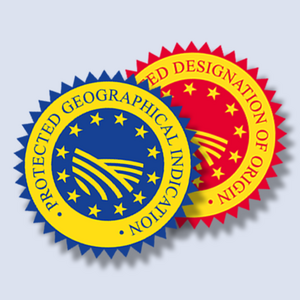Geographical Indications are designations for products from certain geographical areas that owe their quality or reputation to their geographical origin. Because they indicate specific products’ qualities, they tend to receive more attention in the market and command higher prices. Thus, Geographical Indications are important tools to promote economic development, especially in rural areas.
Despite increased attention to GIs from politics as well as from the economy, there has been little legal research on the topic so far. The Institute, which has been researching the subject for many years, in 2018 launched a research agenda that is dedicated to exploring Geographical Indications in-depth. The initiative looks in two directions: the overall functioning of the GI system in the European Union and the potential of GI systems in Latin America.
Overall EU System Assessment
A unitary protection scheme for Geographical Indications for agricultural products and foodstuffs has existed in the European Union since 1992. Two types of Geographical Indications are distinguished: So-called Protected Geographical Indications (PGIs) and Protected Designations of Origin (PDOs). Both types of designations enjoy the same scope of protection, but have different registration and maintenance requirements.
Although the European GI system has proven itself in practice, there is a need to better understand its overall functioning during the last three decades. For that purpose, a Research Team consisting of five scholars undertook a comprehensive quantitative and qualitative analysis of available data.
First, the team conducted a statistical analysis of all PGIs and PDOs registered between 1996 and 2019 under the EU protection scheme for agricultural products and foodstuffs. The data source for this analysis was the so-called “Single Document”. As the core of every protection application it includes, inter alia, a description of the definition of the geographical area, a description of the method of production and details on the so-called origin link - that is the causal link between the product and the geographical area. Further research on bakery products and potatoes from selected countries also dealt with the full specification. The research revealed a significant improvement in the quality and accuracy of information provided in these documents, in particular about the link between the geographical region and the product.
Though the requirements for obtaining GI protection and the main procedural rules are unified within the EU, the national authorities are also involved in the registration process. Further investigation on selected countries’ national rules and related procedures revealed that national approaches and idiosyncrasies could impair the functioning of a uniform protection system.
In 2018 the European Commission announced its intention to extend the current EU GI protection system to non-agricultural products. However, for the time being, protection for those products is only granted at the national level. In anticipation of an EU proposal, the researchers looked into some of the national protection schemes, in order to investigate whether the current EU system with its distinction of PGIs and PDOs would also be a good fit for the non-agri sector. The findings indicate that an expansion of the current system - with some procedural adaptations - might work.
As the next step of the Research Project, it is planned - in cooperation with the University of Alicante and the EUIPO - to investigate the interface between the GI system and the trademark system, including collective and certification marks.
Survey on GI Systems in Latin America
Because of their potential to promote economic and social development, quality differentiation systems are particularly important for Latin American countries. Origin-based production, including manufacturing, handicraft, and especially food production is essential to their economies, in particular, to small producers, craftspeople, and family farmers. In this regard, though many products from Latin America are well-suited for GI protection, integration of local needs, cultural tradition, and social aspects require further research. To identify other available distinctive signs, and to investigate the interface, strengths and weaknesses of each one would help to better understand the overall system.
Moreover, the fact that the protection of GIs has been increasingly the subject of Free Trade Agreements (FTAs) involving Latin American countries may restrict their leeway for the determination of national and regional policies. Thus, further investigation on FTA commitments may reveal implementation challenges at the national level.
The Institute’s “Smart IP for Latin America” (SIPLA) Initiative, launched in 2018, defined GIs as an area in need of investigation. Therefore, the first step within the SIPLA research project on “Collective Distinctive Signs” was an investigation of GIs in a comparative legal assessment of the systems of nine selected countries in the region. Because of the amount of information the team was interested in, a comprehensive questionnaire was designed by the SIPLA team and was answered by representatives from Argentina, Brazil, Chile, Colombia, Costa Rica, Mexico, Paraguay, Peru, and Uruguay. The questionnaire was focused mainly on the GI protection systems and other distinctive signs available. It included a request for information regarding national, regional and local legislation if applicable, and case law.
A comprehensive “General Comparative Report” has been built on the information obtained via the questionnaire and the analysis of the FTAs signed by the selected countries. Finally, common elements have been identified in the different national and regional systems. From those elements, at least two possible areas of research emerge to be developed in the future. The first one refers to distinctive signs different from GIs - especially signs for collective use that can benefit family farmers and small producers. The second one considers further research on GIs’ level of protection focusing on the incorporation of TRIPS standards and FTAs commitments at the national and the regional level.
More information on the Research Initiative can be found in the ePaper of the actual Activity Report.

